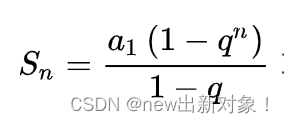本文主要是介绍Modular Multiplicative Inverse(模乘逆元),希望对大家解决编程问题提供一定的参考价值,需要的开发者们随着小编来一起学习吧!
计算模乘逆元原理上有四种方法:
1.暴力算法
2.扩展欧几里得算法
3.费尔马小定理
4.欧拉定理
模乘逆元定义:满足 ab≡1(mod m),称b为a模乘逆元。以下是有关概念以及四种方法及程序。
文章出处:Modular Multiplicative Inverse
The modular multiplicative inverse of an integer a modulo m is an integer x such that
That is, it is the multiplicative inverse in the ring of integers modulo m. This is equivalent to
1. Brute Force
We can calculate the inverse using a brute force approach where we multiply a with all possible valuesx and find ax such that Here’s a sample C++ code:
int modInverse(int a, int m) {a %= m;for(int x = 1; x < m; x++) {if((a*x) % m == 1) return x;}
}2. Using Extended Euclidean Algorithm
We have to find a number x such that a·x = 1 (mod m). This can be written as well as a·x = 1 + m·y, which rearranges into a·x – m·y = 1. Since x and y need not be positive, we can write it as well in the standard form, a·x + m·y = 1.
Iterative Method
/* This function return the gcd of a and b followed bythe pair x and y of equation ax + by = gcd(a,b)*/
pair<int, pair<int, int> > extendedEuclid(int a, int b) {int x = 1, y = 0;int xLast = 0, yLast = 1;int q, r, m, n;while(a != 0) {q = b / a;r = b % a;m = xLast - q * x;n = yLast - q * y;xLast = x, yLast = y;x = m, y = n;b = a, a = r;}return make_pair(b, make_pair(xLast, yLast));
}int modInverse(int a, int m) {return (extendedEuclid(a,m).second.first + m) % m;
}Recursive Method
/* This function return the gcd of a and b followed bythe pair x and y of equation ax + by = gcd(a,b)*/
pair<int, pair<int, int> > extendedEuclid(int a, int b) {if(a == 0) return make_pair(b, make_pair(0, 1));pair<int, pair<int, int> > p;p = extendedEuclid(b % a, a);return make_pair(p.first, make_pair(p.second.second - p.second.first*(b/a), p.second.first));
}int modInverse(int a, int m) {return (extendedEuclid(a,m).second.first + m) % m;
}3. Using Fermat’s Little Theorem
Fermat’s little theorem states that if m is a prime and a is an integer co-prime to m, then ap − 1 will be evenly divisible by m. That is
/* This function calculates (a^b)%MOD */
int pow(int a, int b, int MOD) {
int x = 1, y = a;while(b > 0) {if(b%2 == 1) {x=(x*y);if(x>MOD) x%=MOD;}y = (y*y);if(y>MOD) y%=MOD;b /= 2;}return x;
}int modInverse(int a, int m) {return pow(a,m-2,m);
}4. Using Euler’s Theorem
Fermat’s Little theorem can only be used if m is a prime. If m is not a prime we can use Euler’s Theorem, which is a generalization of Fermat’s Little theorem. According to Euler’s theorem, if a is coprime to m, that is, gcd(a, m) = 1, then
vector<int> inverseArray(int n, int m) {vector<int> modInverse(n + 1,0);modInverse[1] = 1;for(int i = 2; i <= n; i++) {modInverse[i] = (-(m/i) * modInverse[m % i]) % m + m;}return modInverse;
}
这篇关于Modular Multiplicative Inverse(模乘逆元)的文章就介绍到这儿,希望我们推荐的文章对编程师们有所帮助!






